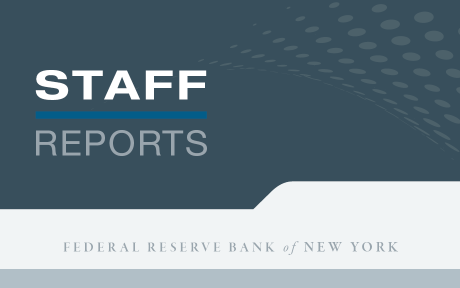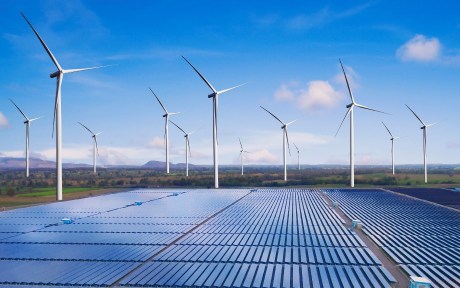Editor’s note: Since this post was first published, the y-axis labels in the first four charts have been corrected. July 10, 12:30 p.m.

Much of the work on climate risk has focused on the physical effects of climate change, with less attention devoted to “transition risks” related to negative economic effects of enacting climate-related policies and phasing out high-emitting technologies. Further, most of the work in this area has measured transition risks using backward-looking metrics, such as carbon emissions, which does not allow us to compare how different policy options will affect the economy. In a recent Staff Report, we capitalize on a new measure to study the extent to which banks’ loan portfolios are exposed to specific climate transition policies. The results show that while banks’ exposures are meaningful, they are manageable.
General Equilibrium Approach
We exploit estimates from general equilibrium models of the decrease in output or profits of given industries as a result of certain climate transition policies. This approach allows us to compare a broad set of climate transition policies while accounting for spillover effects between different industries that cannot be observed using historical data. In addition, and unlike previous work using historical data on carbon emissions, estimates from general equilibrium models are forward-looking in nature.
We introduce two of the three estimates we use in our paper. The first builds on Jorgenson, Goettle, Ho, and Wilcoxen (2018), which provides estimates of the projected decrease in industry output due to carbon taxes. The authors consider four scenarios, with the least stringent being a $25 initial carbon tax and a 1 percent tax growth rate, and the strictest being a $50 initial carbon tax and a 5 percent tax growth rate.
For the second, we consider the G-Cubed model estimates of projected changes in industry output for the Network for Greening the Financial System (NGFS) scenarios, or NGFS (2022). The model provides three scenarios designed to reach a particular policy goal. An orderly transition scenario assumes that policy is immediately enacted to transition the economy to net-zero emissions by 2050. A disorderly transition scenario assumes nothing is done until 2030, at which point policy is enacted to limit the end-of-century temperature rise to 2 degrees Celsius. The last scenario assumes that current climate policy is maintained.
Using the scenarios in both models, we calculate banks’ exposures to transition risks as the decrease in the value of their loan portfolios. When calculating the measure, we assume bank loan values drop proportionally to the decrease in industry output or sales estimated by the general equilibrium model used. We calculate these exposures for both models, and for all the policy options provided in each.
Banks Exposures to Transition Risks over Time
The two charts below plot the average bank exposure over time. The first set of estimates (first chart) reflect the initial tax level and growth rate scenarios from Jorgenson et al. (2018). For all scenarios, banks’ exposures have been relatively stable over time. Additionally, these exposures are relatively modest, ranging from about 1.0 percent to just under 3.5 percent as of 2022, depending on the scenario.
Bank Exposures from Jorgenson et al. (2018) over Time
Bank loan portfolio exposure
Note: Values are average bank loan exposures, weighted by each bank’s total assets.
Exposures for the G-Cubed model estimates of changes in output for each of the NGFS scenarios (next chart) are significantly higher under the orderly and disorderly transition scenarios than under current policy, reaching an exposure of about 9 percent as of 2022. Additionally, banks’ exposures under these scenarios decrease significantly over time during our sample period, from about 13 percent in 2012 to 9 percent in 2022.
Bank Exposures from NGFS G-Cubed over Time
Bank loan portfolio exposure
Note: Values are average bank loan exposures, weighted by each bank’s total assets.
Banks’ Exposures to the Most Transition Policy–Sensitive Industries
In the analysis above, we used the estimated declines in industry output produced by the general equilibrium models. An alternative approach would be to consider a framework in which loans to the most transition policy–sensitive industries eventually become worthless. To implement such an approach, we calculate alternative exposure measures assuming that the value of loans in either the top decile or top two deciles of exposure goes to zero if the modeled policy is enacted, while still assuming that loans to other industries decrease at the same rate as the decline in output estimated by the general equilibrium models.
When we assume that loans to the top decile of industries go bankrupt, banks’ exposures increase by about 4 percentage points based on the estimates from Jorgenson et al. (2018). When we assume that loans to the top two decile industries go bankrupt, banks’ exposures increase by another 6 percentage points. Over time, the exposures to the most policy-sensitive industries appear to be declining. Using the estimates from NGFS (2022), there is a less stark difference across scenarios. This is because the G-cubed model of the NGFS scenarios assumes that under the disorderly scenario, output for the most sensitive industries will eventually decrease to zero. Based on these estimates, we also find that the exposures are mildly falling over time.
Bank Exposures to the Most Transition Policy–Sensitive Industries from Jorgenson et al. (2018) over Time
Bank loan portfolio exposure
Notes: Values are average bank loan exposures, weighted by each bank’s total assets. Estimates are for the $50 initial tax and 5 percent growth rate.
Bank Exposures to the Most Transition Policy–Sensitive Industries from NGFS G-Cubed over Time
Bank loan portfolio exposure
Notes: Values are average bank loan exposures, weighted by each bank’s total assets. Estimates are for the NGFS disorderly scenario.
How Do Banks Manage Transition Risks
The charts above indicate that banks’ exposures to the most transition policy–sensitive industries have declined. To better understand how banks are managing climate transition risks, we break bank loan portfolios into three categories based on their policy sensitivities: high-sensitive industries (top 2 decile decline in industry output), low-sensitive industries (bottom 2 decile decline in industry output), and medium-sensitive industries (all other industries). We then plot bank lending by industry-sensitive exposures for the Jorgenson et al. (2018) and NGFS (2022) models. In both plots, we normalize each exposure measure to equal 1 in the third quarter of 2015, and study changes in exposure around the Paris Agreement in the fourth quarter of 2015. As shown in the two charts below, banks appear to have increased their exposures to industries with relatively low climate transition risk exposures and to have reduced their exposures to industries with high climate transition risk exposures. Together, these charts suggest that banks on their own may be adjusting their lending portfolios both by lending more to “greener” industries and by lending less to “browner” industries.
Bank Exposures by Policy Sensitivity for Jorgenson et al. (2018)
Index, 2015:Q3 = 1
Notes: Values are average bank loan exposures, weighted by each bank’s total assets. Estimates are for the $50 initial tax and 5 percent growth rate.
Bank Exposures by Policy Sensitivity for NGFS (2022)
Index, 2015:Q3 = 1
Notes: Values are average bank loan exposures, weighted by each bank’s total assets. Estimates are for the NGFS disorderly scenario.
Final Words
In this post and this paper, we use insights from general equilibrium models to estimate how exposed banks’ loan portfolios are to different climate transition policies. We find that the exposures are meaningful, but manageable. Additionally, we find that exposures to the most transition policy–sensitive industries appear to have decreased over the last several years. Going forward, it will be interesting to understand whether industries that are badly exposed to transition policies are being shut out of financial markets, or whether they are able to make up for a potential reduction in bank credit by raising funding elsewhere.

Hyeyoon Jung is a financial research economist in Climate Risk Studies in the Federal Reserve Bank of New York’s Research and Statistics Group.

João A.C. Santos is the director of Financial Intermediation Policy Research in the Federal Reserve Bank of New York’s Research and Statistics Group.

Lee Seltzer is a financial research economist in Climate Risk Studies in the Federal Reserve Bank of New York’s Research and Statistics Group.
How to cite this post:
Hyeyoon Jung, João A.C. Santos, and Lee Seltzer, “How Exposed Are U.S. Banks’ Loan Portfolios to Climate Transition Risks?,” Federal Reserve Bank of New York Liberty Street Economics, July 10, 2023, https://libertystreeteconomics.newyorkfed.org/2023/07/how-exposed-are-u-s-banks-loan-portfolios-to-climate-transition-risks/
BibTeX: View |
Disclaimer
The views expressed in this post are those of the author(s) and do not necessarily reflect the position of the Federal Reserve Bank of New York or the Federal Reserve System. Any errors or omissions are the responsibility of the author(s).













 RSS Feed
RSS Feed Follow Liberty Street Economics
Follow Liberty Street Economics